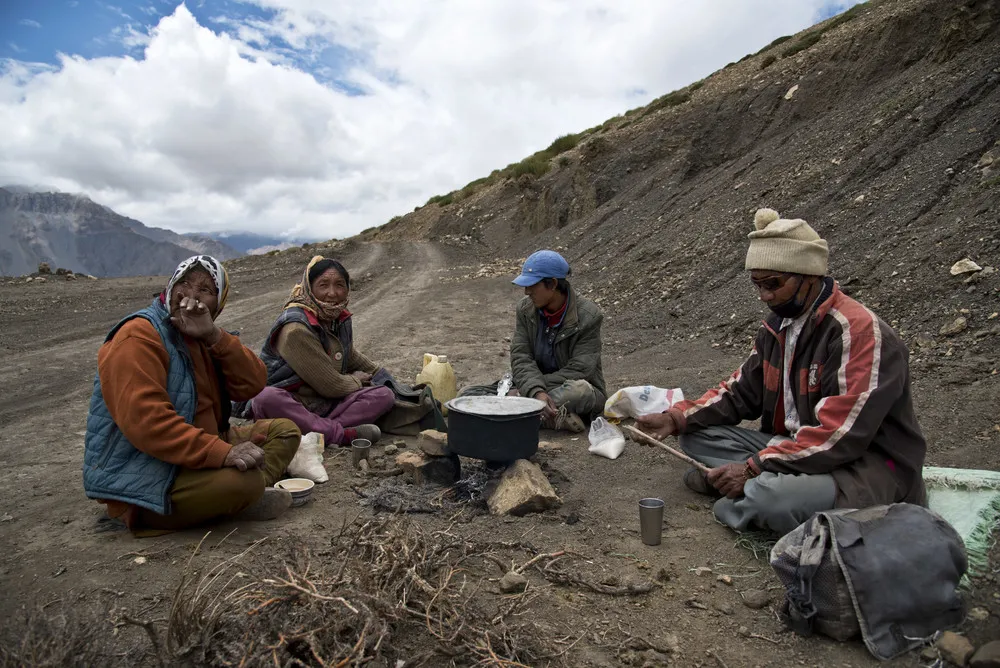|
In this August 17, 2016, photo, from left to right, Chhering Chodom, 60, Tashi Yangzom, 50, Lobsang Chhering, 27, and Dorje Tandup, 58, drink milk tea on the side of the road. For centuries, the sleepy valley nestled in the Indian Himalayas remained a hidden Buddhist enclave forbidden to outsiders. Enduring the harsh year-round conditions of the high mountain desert, the people of Spiti Valley lived by a simple communal code – share the Earth's bounty, be hospitable to neighbors, and eschew greed and temptation at all turns. That's all starting to change, for better or worse. Since India began allowing its own citizens as well as outsiders to visit the valley in the early 1990s, tourism and trade have boomed. And the marks of modernization, such as solar panels, asphalt roads and concrete buildings, have begun to appear around some of the villages that dot the remote landscape at altitudes above 4,000 meters (13,000 feet). Many of the valley's 13,000 or so residents – ethnically Tibetan yet long resident in the Indian state of Himachal Pradesh – welcome the influx of tourists eager to explore the mountains or simply enjoy the pristine surroundings. Tourism has become so important it now makes up at least half of most people's annual income, Khanna said. The rest of the people's wealth comes from traditional channels – herding sheep and goats, and growing crops like black beans, barley and, more recently, green peas. But some villagers and travelers worry the influx of new funds will bring competition, greed and environmentally taxing change, such as flush toilets that might empty straight into the Spiti River, or a strain on the region's already limited water sources. (Photo by Thomas Cytrynowicz/AP Photo)
|

